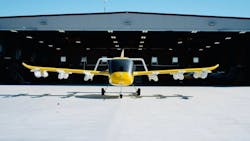Boeing's Wisk eVTOL unit partners with NASA to integrate autonomous aircraft
WASHINGTON - As America’s air traffic control (ATC) system faces scrutiny for staffing shortages and antiquated equipment, NASA is working to prepare controllers for a new generation of self-flying aircraft.
Wisk Aero, the electric vertical takeoff and landing (eVTOL) subsidiary of Boeing, on Tuesday announced that NASA awarded it a non-reimbursable Space Act agreement (NRSAA) to explore the integration of autonomous aircraft—like its Generation 6 air taxi—in the National Airspace System (NAS) under IFR, Jack Daleo writes for Flying. Continue reading original article.
The Military & Aerospace Electronics take:
28 May 2025 - Wisk and NASA first partnered in 2020 to support the safe integration of autonomous aircraft in urban air mobility (UAM) operations. Under the new agreement, research will focus on designing airspace routes for highly automated operations, defining requirements for onboard and ground-based safety systems, and developing air traffic control communication protocols tailored to uncrewed aircraft.
Last month, teams from Wisk and NASA launched initial work with a workshop at the FAA’s Mike Monroney Aeronautical Center in Oklahoma City. Discussions centered on the coordination of instrument flight procedures and advanced automation technologies for future autonomous flight operations.
Related: Wisk Aero announces acquisition of software validation and verification company Verocel
Related: Boeing self-flying air taxi venture Wisk Aero sets plan for Texas service
Related: Wisk Aero and Japan Airlines announce autonomous flight partnership
Jamie Whitney, Senior Editor
Military + Aerospace Electronics
